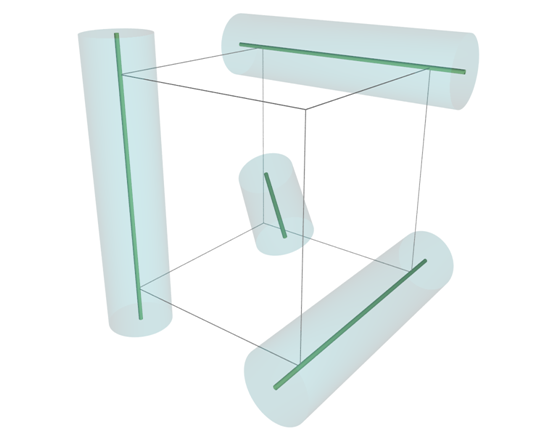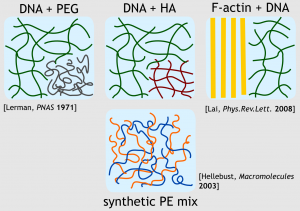We finished one of our studies concerning polyelectrolyte mixtures, and submitted a paper “Polyelectrolyte composite: Hyaluronic acid mixture with DNA” to Macromolecules (Supporting info>>>).
In a paper we focus on a mixture of two similar polyelectrolytes: DNA and hyaluronic acid (HA). Polyelectrolytes (PEs) are polymers with ionizable groups on consitutent monomers and are charged in solution. The electrostatics lead to behaviour qualitatively different than for neutral polymers. The intrinsic rigidity of bioPEs, often higher than for the flexible neutral polymers, along with the long-range nonspecific interactions significantly affect the cellular macromolecular environment. There remain difficulties in understanding these systems, but there are distinctive technical applications (gene therapy, gene chips, DNA sequencing, biocompatible materials) that can be improved with the advancements in the field of PEs.
A region of the phase diagram of PEs at concentrations from 10 g/L and up to 1000 g/L covers the packing levels of different bioPEs in living matter (chromosomes, viruses, amyloid particles, collagen systems). In vivo and in vitro packing is usually achieved by oppositely charged multivalent ions/polyions or neutral crowding agents. However, a study of like-charged PE mixtures could also contribute towards further understanding of realistic, complex crowded environments.
In our study we covered a range of concentrations from 5-200 g/L across a broad range of concentration ratios (0.05 – 50) and addressed some fundamental issues in PEs, the extent of Manning condensation and its effect on the osmotic pressure of the system.


